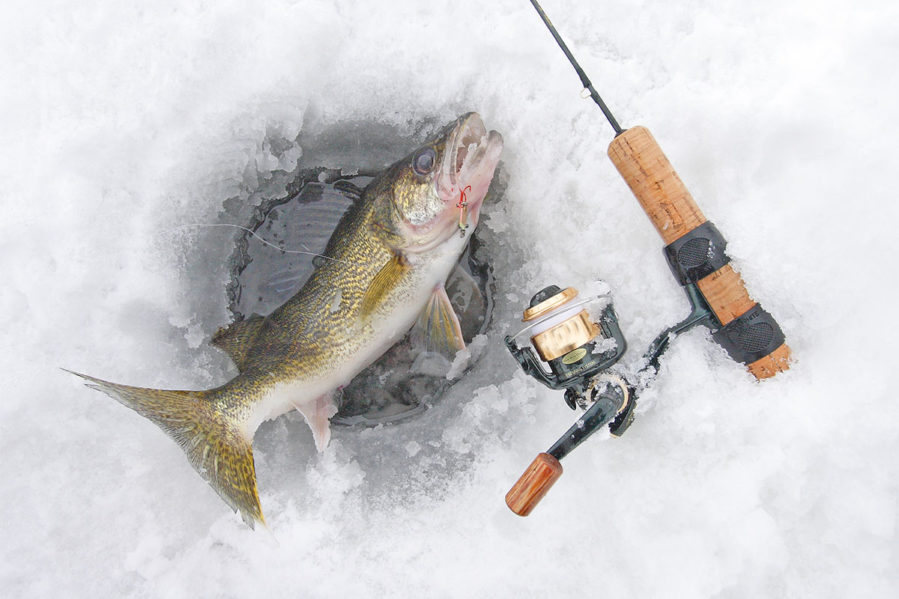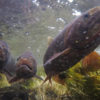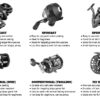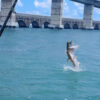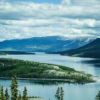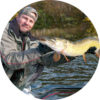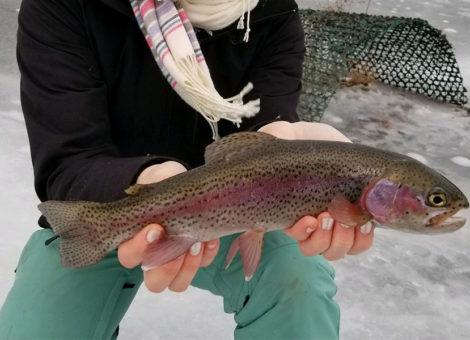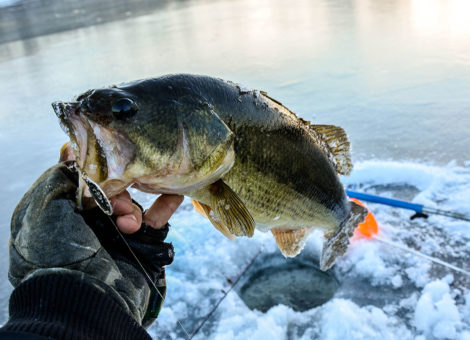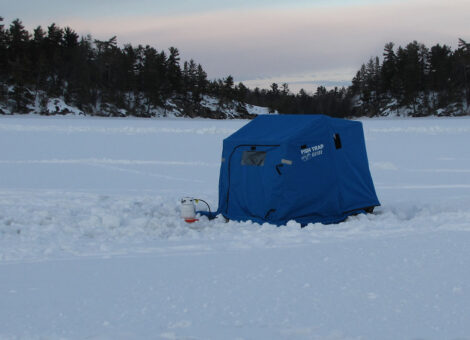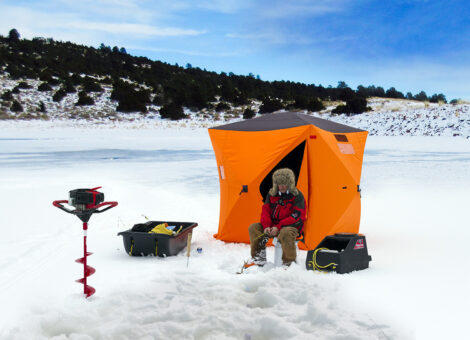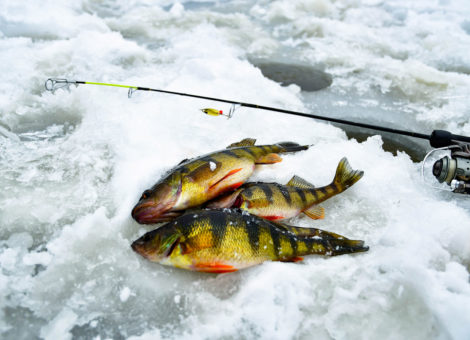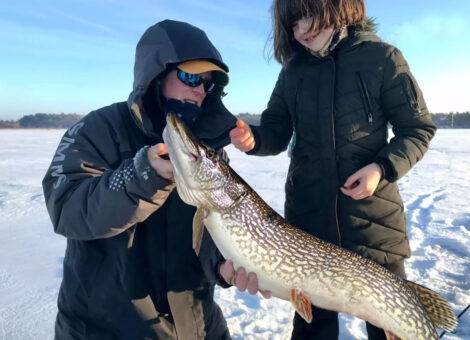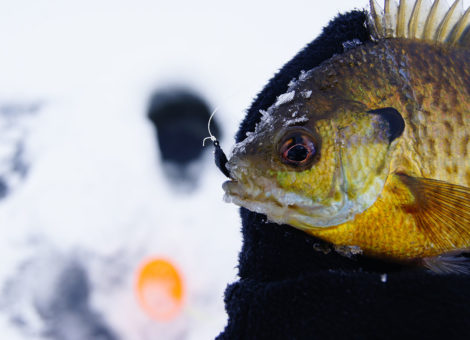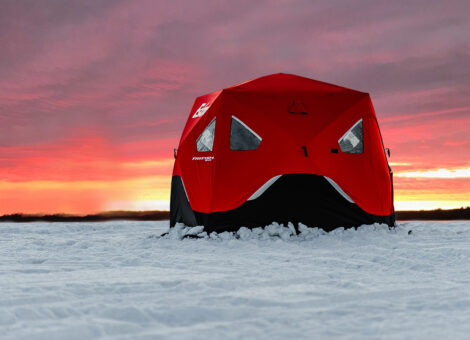The United States is blessed with a wide variety of game fish species to catch and a diverse system of lakes and waterways to catch them in. One of the top predators and species to catch in these habitats are the mighty Walleye, sometimes referred to as the Walleyed Pike. The Walleye can be caught ice-fishing using various methods and tackle in over 20 U.S. States. Walleye are well known by anglers and chefs alike for their flakey white meat and it exquisite taste.
Highly proficient night-hunters, Walleye can be identified by their massive eyeballs and sharp teeth, which are adaptations to see and hunt in extremely low-light conditions. Their eyes are adapted to these conditions thanks to a special membrane called the tapetum lucidum that reflects light back through their retinas. Knowing this is important to anglers because it means Walleye can hunt in extremely murky or dark water where their prey is at a disadvantage.
The current world record Walleye was caught in 1960 and weighed in at 25lbs measuring 41inches in total length by Mabry Harper in Tennessee. Although bathed in controversy, it still blows all other records out of the water. No other state record even comes close to this behemoth. Gerry Partlow caught the next heaviest fish out of Bull Shoals Lake in Missouri in 1988. No one knows when or where the next record will be caught, but maybe it will be you, on your next ice fishing trip.
Where to go Ice-fishing for Walleye?
According to a survey in 1991, the Walleye can be found all through the Mississippi River basin from Canada to Alabama and Arkansas. Although the Walleye distribution is excellent, when ice-fishing for them, we are primarily limited to the northern U.S. and Canada, where the ice is thick and safe enough to walk on.
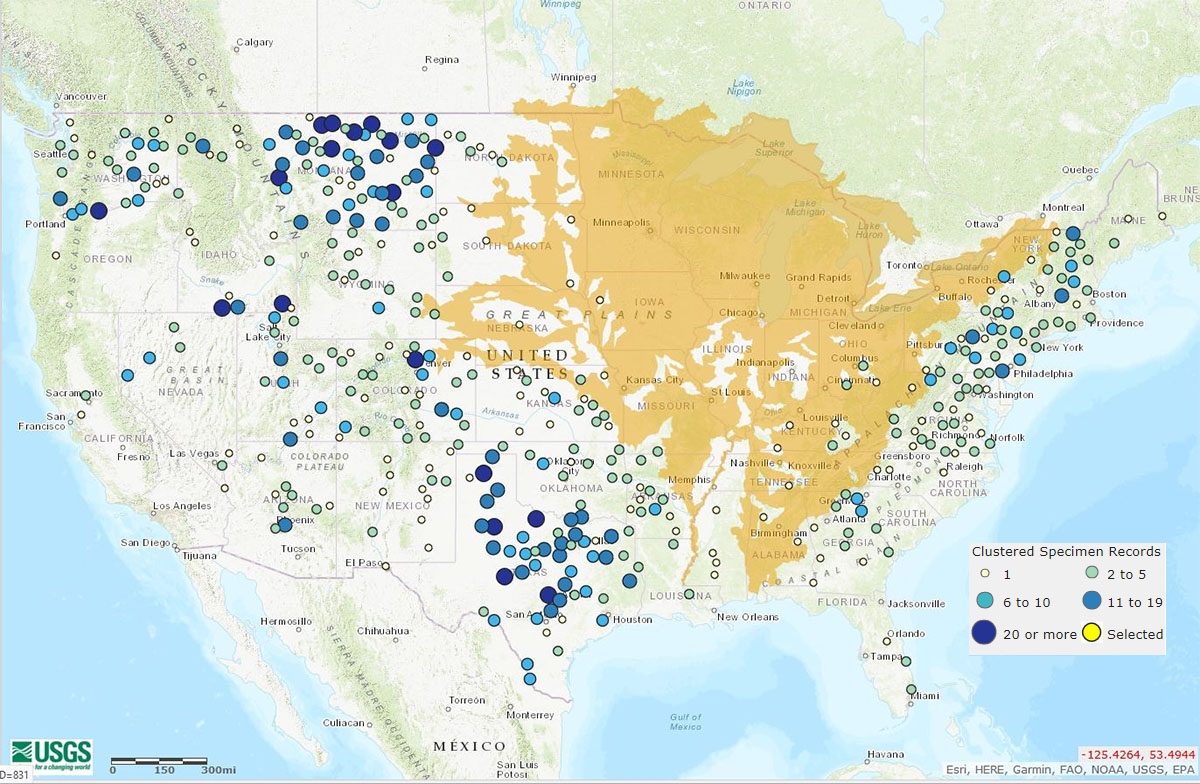
- Lake Erie
- Lake Michigan
- Devil’s Lake, North Dakota
- Lake Sakakawea, North Dakota
- Upper Mississippi
- Lake of the Woods, Minnesota
- Lake Winnipeg, Manitoba
These lakes and rivers have excellent infrastructure and culture for ice-fishing, making them hot travel locations for avid ice-fishermen.
Walleye through the ice: Where do they hide on Lakes?
When the water gets cold, most fish species will migrate to deeper sections of lakes below the thermocline. Walleye are no exception to this type of behavior. Usually, you will find most Walleye in 10-25 feet of water on most lakes; with some deeper lakes, they can be as deep as 50ft! This water depth is typically warmer in the winter months and less prone to fluctuations in temperature.
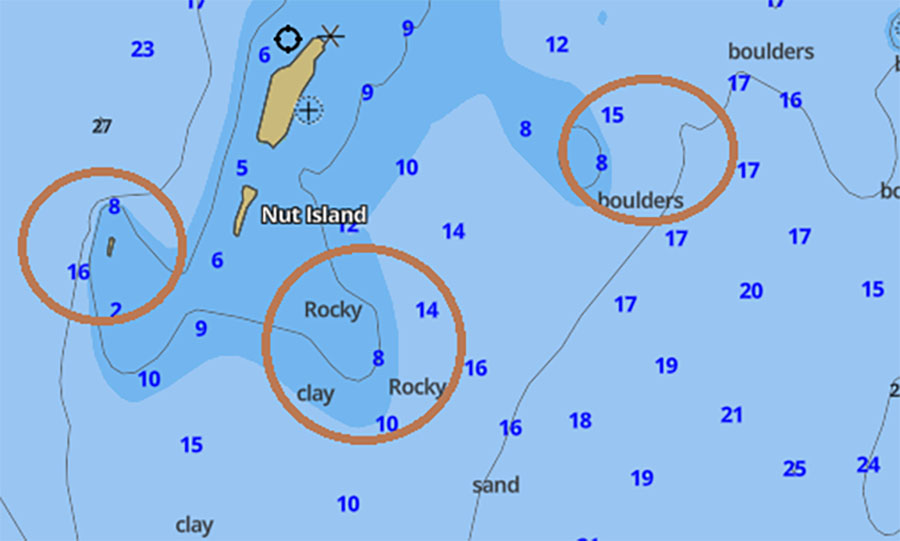
- Drop-offs and Ledges – These topographic formations are hot spots for Walleye patrolling from deeper to shallow water during the winter. Look for flat areas with steep drop-offs from 5-10ft to 20ft.
- Vegetation – Walleye are predatory species that feed on smaller baitfish typically. Outside edges of weed lines and vegetation provide excellent habitat for the species that Walleye prefer to prey on and thus are great places to fish for them through the ice.
- Timing – On lakes, the Walleye bite is typically the most active during the early morning, evening, and night on the shallower sections of the lake. During these times, the Walleye move from their deeper holding locations to feed. A common rule of thumb for Walleye is to fish deeper during the day and shallower during the evening and night when they feel more comfortable moving into shallow water.
Walleye through the ice: Where do they hide on rivers?
Considered the last frontier of ice-fishing for Walleye, frozen rivers have been attempted by many and mastered by few. Fishing on rivers, even without ice, is already tough if you aren’t sure where to go. Walleye prefer areas of high current near deep cuts or river drop-offs. During the winter, if you have a high flow under the ice, Walleye will move far upriver to find uncontested feeding grounds.
- Shoals and Sandbars – Try to fish the front or back end of sandbars or shoals where the water drops off into deeper, slower pools. Typically, Walleye will move up into these areas of faster water to feed. Walleye will move up onto sandbars and shoals during the early morning, evening, and night.
- Channel Edges – Depending on the bottom contour and current, the edges of channels are also a prime habitat for Walleye through the ice on rivers. Remember that Walleye love current, whether it’s deep or shallow.
- Timing – In rivers, fish are constantly moving around and feeding to maintain their higher metabolic needs and are therefore feeding more frequently than in a lake, day or night. Larger specimens typically only migrate up to shallower water during low light conditions.
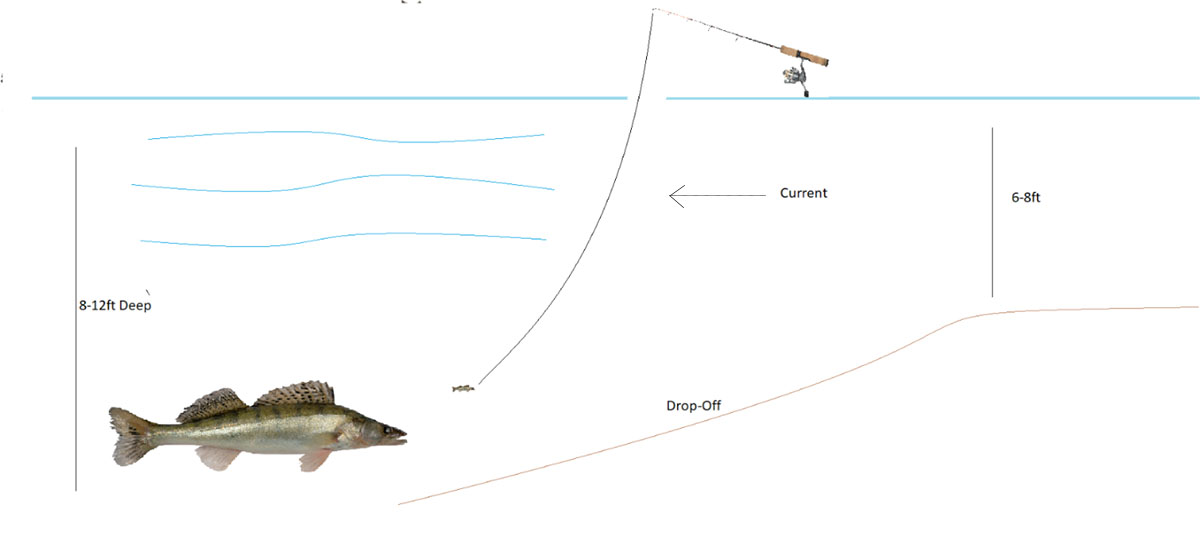
Tackle and Gear for Walleye Ice Fishing
- Reel – For Walleye, a 2000-3000 size spinning reel is typically sufficient even for larger specimens through the ice. Suppose you are fishing on a river with heavy current and structure. Upsizing to a larger 3000-4000 size reel will give you more holding power if the fish goes sideways in the current.
- Rod – A light to medium action ice-fishing pole 26-30inches in length is my go-to for Walleye fishing through the ice. Like other species, Walleye become slower and lethargic during the year’s colder months, and rarely will you be outclassed using a set-up like this.
- Line – Because Walleye have fantastic vision, a fluorocarbon line is essential for ice-fishing regardless of water and light conditions. Typically, I’ll size up to 8lb test when I know the bite is on.
Equipment to Bring
Before going on your ice-fishing adventure for Walleye, bring the following items at your discretion. They aren’t required, but they will make ice fishing a much more enjoyable experience.
- Electric or gasoline ice augur – Make your life easier with one of these
- Fingertip gloves – Keep your hands warm without sacrificing dexterity
- Transducer – Gives you an idea of what is below the ice near your hook
- Thermos – Keep your spirits high with some warm coffee, tea, or soup
- Pliers – Remember, Walleye have some sharp teeth
- Multiple layers – If you plan on staying on the ice for an extended period, be sure to have various layers of clothing you can put on and remove at your discretion.
Bait Recommendations
- Minnows and Shiners – Tried and true, you can’t go wrong with a live minnow for Walleye. Rig them up with a jig head appropriate for the lake or river conditions and fish them just off the bottom. Live bait is best but tipping a jig head with a dead minnow is the next best thing.
- Waxworms and Night-crawlers – Although they can be effective on some days, typically leave the worms at home if you plan to target Walleye. Generally, I will use these baits to tip the hooks of my artificial lures if I run out of minnows.
Artificial Lures
- Jigs – Extremely versatile in all depths and river conditions, pair the appropriately sized jig with a curly tail or a rubber minnow. Try to fish the most lightweight jig you can feasibly get away with for the current conditions. Fish heavier jigs if you are fishing in deeper water or areas with faster current. And lighter jigs on calm water conditions.
- Flutter Spoons – Flashy spoons are great attractor baits for Walleye as they mimic a distressed minnow or baitfish. Small upward strokes and natural falls are a great way to initiate a strike from a hungry Walleye.
- Rattletraps – Although less used, rattletraps put a lot of vibration and flash into the water that can call in aggressive Walleye (as well as other species).
Fishing Methods
To fish with artificial or live bait for Walleye, you want first to drop your line to the bottom and give the rod 6-10 strokes upward. Let the lure fall back down and give your reel a quarter turn. Repeat 5-10 times, then drop your lure down to the bottom. Regardless of what type of lure or bait you decide to use. This method is simple and effective for many other species in addition to walleye.
Techniques, Tips, and Tricks
As with any species, there are enough tips, tricks, gimmicks, and ideas to give Webster a run for his money. Here are a few of my favorites to deploy when exploring a new area or the bite is slow.
- Into the Current – On Rivers Walleye are typically always facing the current. Rarely will they pursue a meal up current from their current position. This preserves valuable energy for the Walleye. Most of your bites will come as your bait is carried to the fish by the current itself. Keep your bail open and let the lure drift back into the fish, giving light strokes here and there to attract the Walleye’s attention.
- Drill Those Holes – On frozen lakes and rivers alike, it’s best to drill multiple holes in an area when searching for Walleye, especially when fishing a river. Make sure to bring a gas or electric ice augur to assist with this process. Walleye typically school in groups and use similar pathways and current channels to and from their feeding grounds.
- Into the Darkness – Regardless of what time you want to wake up to fish for Walleye, night-time will remain the most active Walleye bite on any lake or river. They don’t have those giant freaky reflective eyes for nothing.
- They Ain’t Bitin! – If the bite is slow and the fish are finicky, but you know they are there, it’s time to drop down a live bait. Even the least peckish of Walleye can’t resist a live minnow flopping around in front of their face.
- Set up multiple lines – To drastically improve your chances of catching Walleye, bring multiple rods to set up as dead sticks on holes not actively fished by your jigging rod. This will give you an idea of which holes produce fish and bites, and which are not.
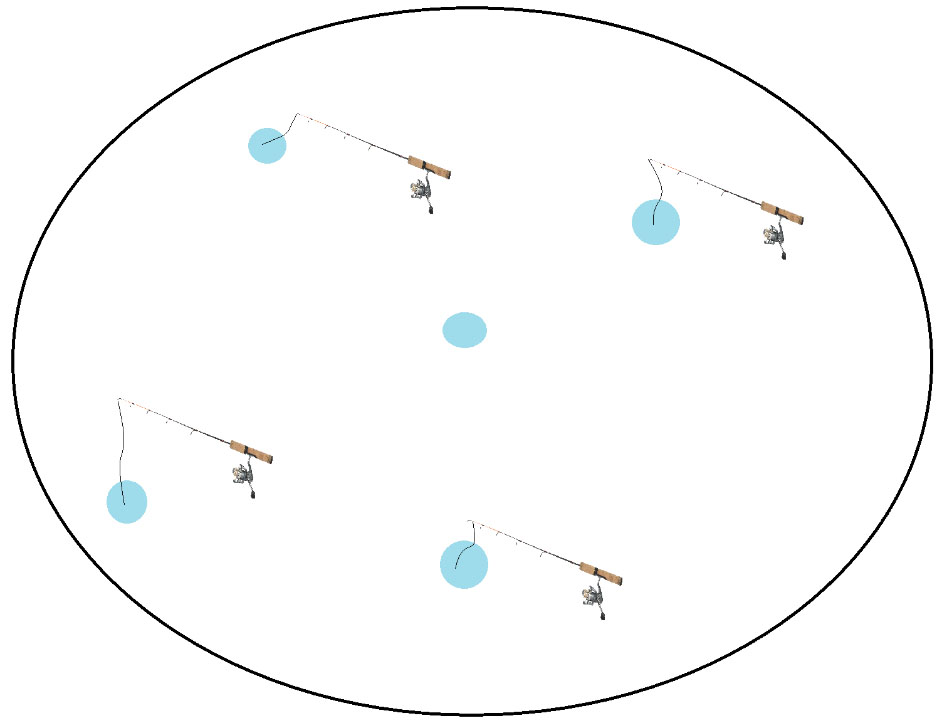
Walleye fishing is a rewarding experience and a worthy species to pursue on the ice. They can reach substantial sizes, will readily eat both natural and artificial lures, put up a decent fight, and even taste delicious! Even if ice-fishing isn’t your cup of tea, Walleye can be caught year-round across the United States. So, what are you waiting for?


